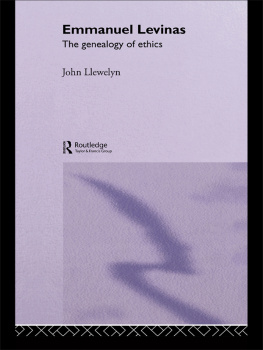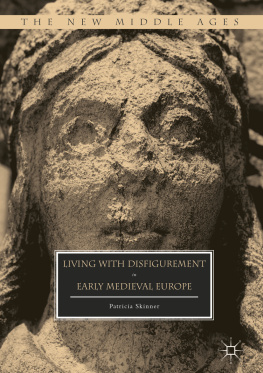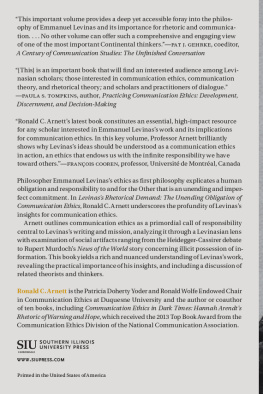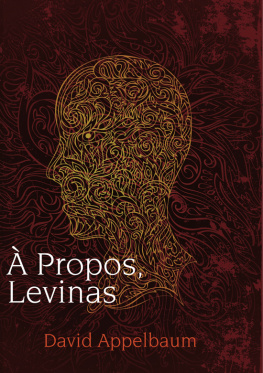Levinas and the Other in Narratives of Facial Disfigurement
Offering readings of a range of fictional and biographical texts, including work by Richard Selzer, Nathaniel Hawthorne, Gaston Leroux, Willa Cather, Natalie Kusz, and Lucy Grealy, this book examines reactions to facially disfigured people on the basis of Emmanuel Levinas ethics of the face. Drawing on Levinas concern with the holistic dimension of the face as an encounter with the others whole person and the sense of moral obligation that this instils in usa sense that disfigurement disrupts by drawing our attention to the disfigurement as a spectacle and threatening to limit our view of that individualthe author explores how we react to the facially disfigured and how we ought to react.
Gudrun M. Grabher is Full Professor and Chair of the American Studies Department at the University of Innsbruck, Austria. She was previously a Visiting Scholar at Harvard University and the recipient of a research scholarship to Tokyo, as well as a guest professor at the University of Vienna in Austria and at the University of Notre Dame in the USA. Her main fields of research are American poetry, literature and philosophy, literature and the arts, and medical humanities.
First published 2019
by Routledge
2 Park Square, Milton Park, Abingdon, Oxon OX14 4RN
and by Routledge
52 Vanderbilt Avenue, New York, NY 10017
Routledge is an imprint of the Taylor & Francis Group, an informa business
2019 Gudrun M. Grabher
The right of Gudrun M. Grabher to be identified as author of this work has been asserted by her in accordance with sections 77 and 78 of the Copyright, Designs and Patents Act 1988.
All rights reserved. No part of this book may be reprinted or reproduced or utilised in any form or by any electronic, mechanical, or other means, now known or hereafter invented, including photocopying and recording, or in any information storage or retrieval system, without permission in writing from the publishers.
Trademark notice: Product or corporate names may be trademarks or registered trademarks, and are used only for identification and explanation without intent to infringe.
British Library Cataloguing-in-Publication Data
A catalogue record for this book is available from the British Library
Library of Congress Cataloging-in-Publication Data
A catalog record has been requested for this book
ISBN: 978-1-138-08666-1 (hbk)
ISBN: 978-1-315-11095-0 (ebk)
This book has been inspired, supported, and made possible by a number of people to whom I owe my sincerest gratitude: Hans Anderl, former Head of the Department of Plastic and Reconstructive Surgery at the University of Innsbruck (now Medical University of Innsbruck) and world-renowned pioneer in his field, initiated me into the fascinating world of plastic and reconstructive surgery and helped me gain some understanding of the anatomy of the face and the possibilities of mending its aberrations. John B. Mulliken, famous plastic surgeon at the Childrens Hospital of Harvard University, in April 2011, kindly granted me an interview, which allowed me not only a glimpse into the realm of reconstructive surgery but enriched my understanding with his comments on the stories I was to deal with in my book. Patrick Byrne, plastic surgeon at Johns Hopkins University, shared his enthusiasm for rhinoplasty with me in an interview that he kindly granted me in August 2012.
During the course of the years of working on this book, several people offered me the opportunity to present my evolving thoughts and ideas at various conferences: David Etler, the initiator and organizer of the Examined Life conferences at the University of Iowas Roy J. and Lucille A. Carver College of Medicine; Matthew Brown and Magdalena Grohman, with their conference series on Values in Medicine, Science, and Technology at the University of Texas at Dallas; Hailey Haugen and Meredith Guthrie, when chairing the disability studies panels at regional PCA/ACA conferences; Vittorio Hsle, when hosting my guest lecture at Notre Dame University; the organizers of the Society for Disability Studies conference; and my colleagues Waldemar Zacharasiewicz in Vienna and Wolfgang Zach in Innsbruck, when including me in their conference programs with my presentations on the topic of the disfigured face.
I am deeply grateful also to my family: my mother Maria, who at age 96 is as alert as ever and can never get enough details of my scholarly work in progress; my sister Berghild, for indefatigably believing in me and encouraging me, and always taking charge of my physical and spiritual welfare; and my brother Arno, who unremittingly encourages me to take a nap whenever he finds I need one, which is daily. I also want to give thanks to all my friends and colleagues who have had an open ear to my fascination with the disfigured face, not always sharing it but going along with it anyway.
I can hardly find words adequate enough to express my gratitude to Camila Torres Carrillo: She undertook the formatting, proofreading, and checking of all issues with such precision, alacrity, skill, competence, and judiciousness that I would simply have been lost without her tremendous help and support, which was always accompanied by a friendly word of encouragement.
I am equally indebted to Benjamin Robbins for his meticulous and thorough proofreading of the manuscript.
I am very grateful to the Faculty of Language, Literature and Culture at the University of Innsbruck for the financial funding of this project.
The subtitle of this book, Singing through the Mask, was inspired, a long time ago, by a painting called Maske (mask) by the famous late baritone, conductor, painter, and writer Dietrich Fischer-Dieskau. When his widow, Jlia Vrady Fischer-Dieskau, kindly granted me the copyright to use it for the cover of my book, she made a long-cherished dream come true, and I owe her my sincerest thanks, also for sharing the secret story behind the mask with me. I am equally grateful to the Kulturhistorische Museum in Rostock for allowing me to use the Jawlensky painting, as well as to Hans Anderl for his picture of Khotho, and Johannes Mahlknecht for illustrating Selzers story The Sympathetic Nose for the purpose of this book.
Last but not least, I am very grateful to the staff at Routledge, in particular to Alice Salt and Neil Jordan, for all their support, patience, and advice.
Chapters 5.3, 5.4, and 5.7 are modified, altered, and expanded versions of my following articles, which have appeared elsewhere: Stuck with the Sur-face: An Ethical Approach to Facial Disfigurement in Willa Cathers The Profile.Philosophy Study 6.3 (2016): 131138; Ethical Issues of Facial Disfigurement in American Narratives: The Example of Richard Selzers Short Story Imelda.Literatures in English: New Frontiers in Research. Eds. Wolfgang Zach and Michael Kenneally. Tbingen: Stauffenburg, 2015. 161172; and A Mothers Loss of Her Daughters Face: Ethical Issues of Facial Disfigurement in Natalie Kuszs Memoir Road Song.Disjointed Perspectives on Motherhood. Ed. Catalina Florina Florescu. Lanham: Lexington Books, 2013. 120.












